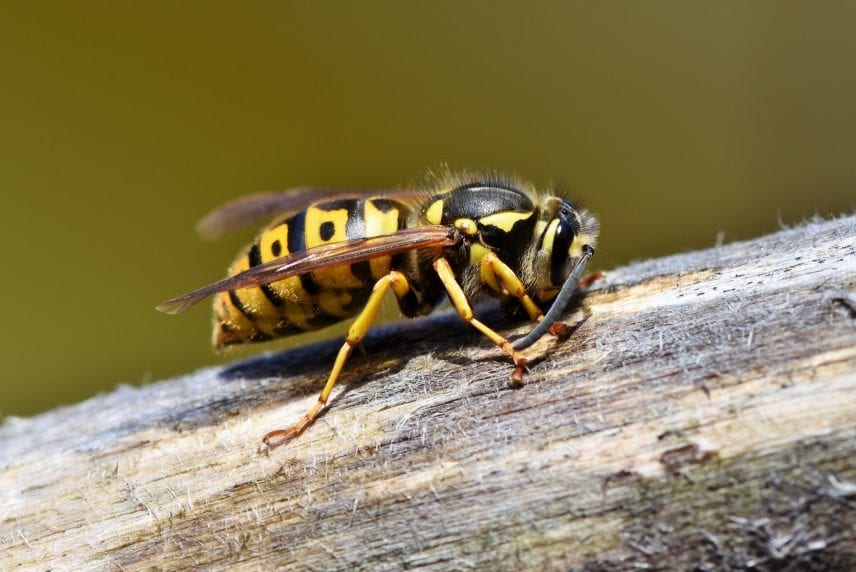With over 30,000 species of wasps out there, it’s common to find an unwanted guest in your yard. The question is, how do you prevent them from coming in the first place?
In this article, learn all about wasp prevention and what to do if you have them. Read on to explore all of these tips and tricks before you have these unwanted guests in your backyard.
What Does a Wasp Look Like?
Before preventing wasps, you’ll want to make sure it is a wasp and not a bee. It’s best to leave it to the professionals to identify the stinging insect in your yard.
There are 3 common types of wasps:
- Paper Wasps
- Hornets
- Yellow Jackets
Yellowjackets will have shorter legs than a paper wasp. They’ll also have black antennae. They have a black and yellow abdomen. Their nests have a paper-like covering.
Paper wasps have yellow and brown markings, but some can have red. They have longer legs than other stinging insects.
Hornets have white markings on their thorax and head. They also have a papery shell around their nest.
They’re normally brown with orange markings.
What Does a Bee Look Like?
Bees have 4 wings, an abdomen, thorax, and head. Each species will have different features as far as markings.
Carpenter bees, for example, have a metallic appearance and are hairless. The honey bees tend to be smaller.
Bumblebees are bigger and are hairy. Their bodies are yellow and dark.
Honeybees have yellow-orange and brownish-black bands.
What’s Attracting Wasps?
Before we begin on how to prevent them, it’s important to understand what’s causing them in the first place. In the wild, you can find wasp nests in trees and shrubs.
If you have building material in your yard, this could attract your unwanted guests. They love old wooden fences, landscaping plants, and rotting tree bark. This material allows them to build nests.
Whether they build their nest in a bush or chimney, it allows them a place to hide from predators.
Any food or sugary drinks that are left out can be an attractor for them. Certain bird feeders can attract them as well.
Avoid Swatting Them
Avoid swatting wasps since they can take this as aggression. When this occurs, it can then attract other wasps to the area.
It’s best to encourage them to leave instead of killing them. Avoid trying to smoke them out of their home. This could lead to a fire hazard.
Check Your Yard
You’ll find the nests of wasps in the ground or in holes. Find any tunnels or holes in your ground.
You can watch the wasps, and see where they land.
Fill Holes
Any holes you do find make sure that you fill them immediately. This is especially important if you have pets digging up holes in your yard.
Keep Them Out of Your Home
You’ll want to prevent wasps outdoors and indoors. To ensure they can’t get into your home, make sure to fix any broken fences or siding.
Ensure your bushes or grass are trimmed as well.
Avoid DIY Wasp Removal
You might be tempted to do it yourself and remove unwanted pests, but it’s best to leave it to the pest professionals.
It’s not a guarantee that they’ll leave their nest, and your yard when using a DIY method. Many of these methods can also lead to harm to you and your family.
Wasp Spray
Wasp sprays aren’t a way to completely get rid of the problem. The wasps will still release pheromones which can attract more wasps to the colony.
Have Plants That Detract Wasps
Since wasps like the sweet-smells of flowers, other scents will detract them. You can plant these detractors next to your flowers, or in your garden.
Some examples are:
- Pennyroyal
- Thyme
- Spearmint
- Wormwood
- Lemongrass
- Citronella
Seal Garbage Cans
Since food will attract wasps to your yard, it’s important to keep all garbage cans sealed. If you have a compost, you might want to consider composting indoors.
Remove Leftover Food
Never keep any leftover food lying around outside on your patio or in your yard. Always keep your yard and patio clean. These items can attract them to the area.
Use Wasp Decoys
Since wasps are territorial, if you use a decoy, it can scare off other wasps. You can create nests, and place them around your home.
The best time to place them is during the spring. This is when they come out from hibernation.
Seal Cracks
Check your home for any cracks you might find. For example, any cracks in the siding, or where power lines are. Fix any holes in your window screens. Don’t try to seal their nest, since they can find a way out.
Remove Overripe Fruit From Trees
Since wasps like nectar, make sure to remove any overripe fruit from your trees. Some of their favorites are berries, plums, pears, and apples.
Make sure you head outside each day and check your fruit plants. Make sure you tie up the overripe fruit in a bag so they can’t get into it.
For composting, put the fruit under items that wouldn’t attract wasps.
Wasp Prevention: How to Keep Them Away for Good
While wasp prevention can feel a bit overwhelming, it’s worth it to prevent them from coming to your home or yard in the first place.
Do you currently have a stinging insect problem? Are you not sure whether it’s a wasp or a bee? Contact us today, and we’ll come up with an action plan specific to your needs.


